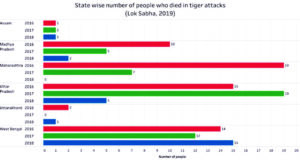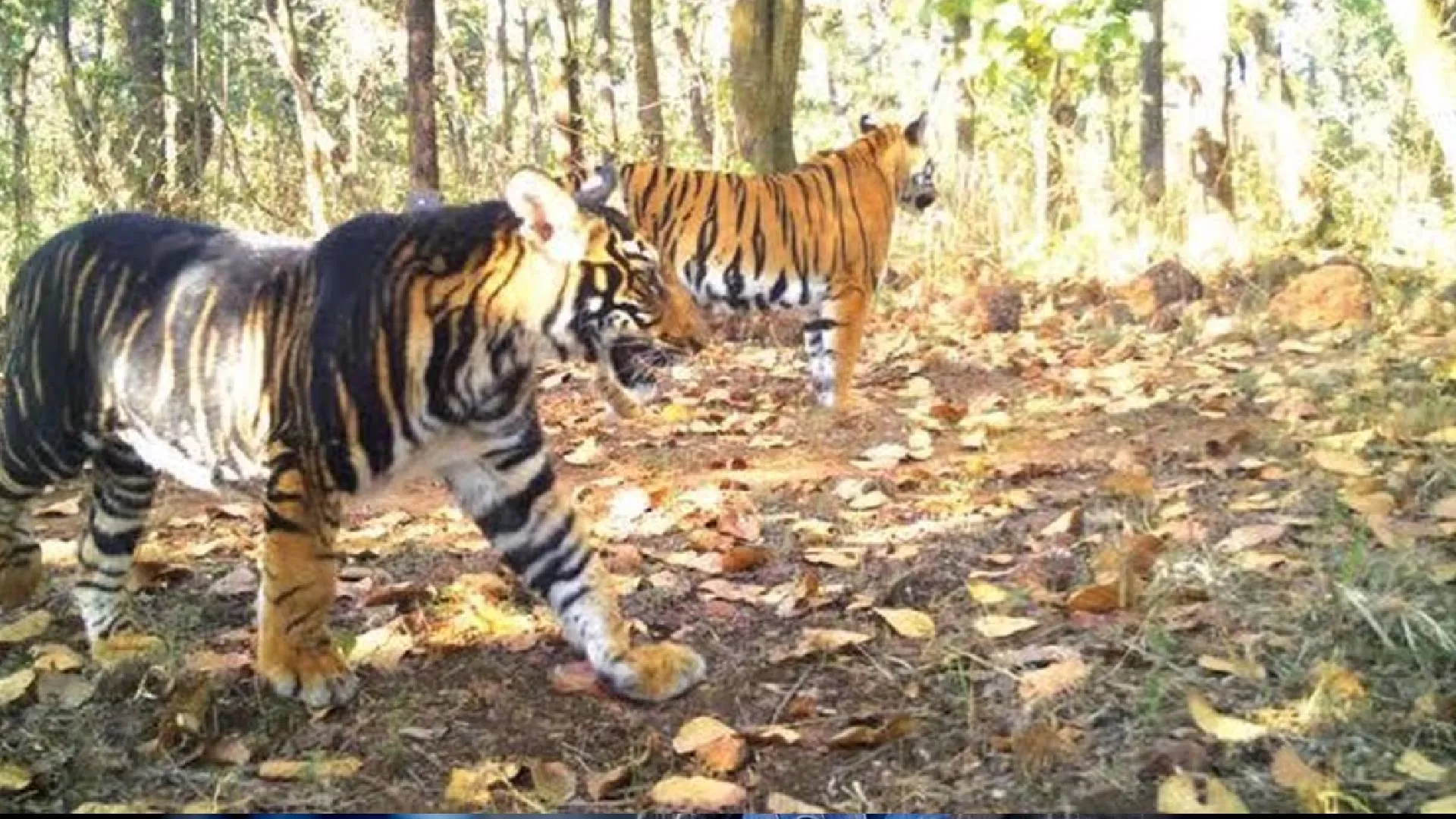A total of 302 people died in tiger attacks in the country over the last five years with Maharashtra accounting for over 55 per cent of these deaths, according to official data.
The Centre has disbursed Rs 29.57 crore as compensation to the families of the victims.
While 112 people died in tiger attacks in 2022, 59 died in 2021, 51 in 2020, 49 in 2019 and 31 in 2018, the government told the Lok Sabha earlier this week.

During this period, Maharashtra alone recorded 170 such deaths — 85 in 2022, 32 in 2021, 25 in 2020, 26 in 2019 and two in 2018.
Uttar Pradesh reported 39 deaths due to tiger attacks in the last five years — 11 each in 2022 and 2021, four in 2020, eight in 2019 and five in 2018.
In West Bengal, 29 people died. However, this number has steadily decreased over the years, from 15 in 2018 to just one in 2022.
The data showed an increase in tiger attack-related deaths in Bihar — zero in 2019, one in 2020, four in 2021 and nine in 2022.
The number of tigers in India increased from 2,967 in 2018 to 3,682 in 2022, an annual rise of 6 per cent, according to government data released in July this year.
With a 50 per cent increase in the last four years, Madhya Pradesh has the maximum number (785) of tigers in the country, followed by Karnataka (563), Uttarakhand (560), and Maharashtra (444).
‘Man-eater’ captured in Kerala
A 13-year-old tiger captured from Poothadi village in Kerala’s Wayanad district has found a new home in the recently established Thrissur Zoological Park at Puthoor. The tiger, known as WWL-45, was suspected of killing a 36-year-old farmer, M Prajeesh, near Vakeri, leading to its capture on 18 December. The farmer’s partially eaten body was discovered on 9 December, causing tension in the area as locals demanded the tiger’s euthanization. However, forest officials clarified that norms prohibited killing a captured animal, adding to the complexity of the situation.
The tiger was trapped in one of the seven cages set up in the locality, specifically on a coffee plantation near where Prajeesh’s body was found. Following the farmer’s death, an order was issued to kill the tiger if it couldn’t be captured alive, reflecting the residents’ demands, mainly from the farming community, who claimed the tiger had been in the locality for an extended period. Now, the tiger resides in the Thrissur Zoological Park, marking the resolution of the challenging circumstances surrounding its capture and fate.
Reasons for attacking
Like most other predators, tigers tend to attack humans only while hunting or when they feel threatened. If a human comes too close and surprises a sleeping or feeding tiger, or a tigress with her cubs, the tiger is prone to respond with aggression. Tigers have also been known to attack humans in cases of “mistaken identity” (for example, if a human is crouching while collecting firewood, or cutting grass) and sometimes when a tourist gets too close.
In some cases, tigers will change their natural diet to become man-eaters. This is usually due to a tiger being incapacitated by a gunshot wound or porcupine quills, or some other factors, such as health issues and disabilities. In such cases, the animal’s inability to hunt traditional prey forces it to stalk humans, which are less appetizing but generally much easier to chase, overpower, and kill.























